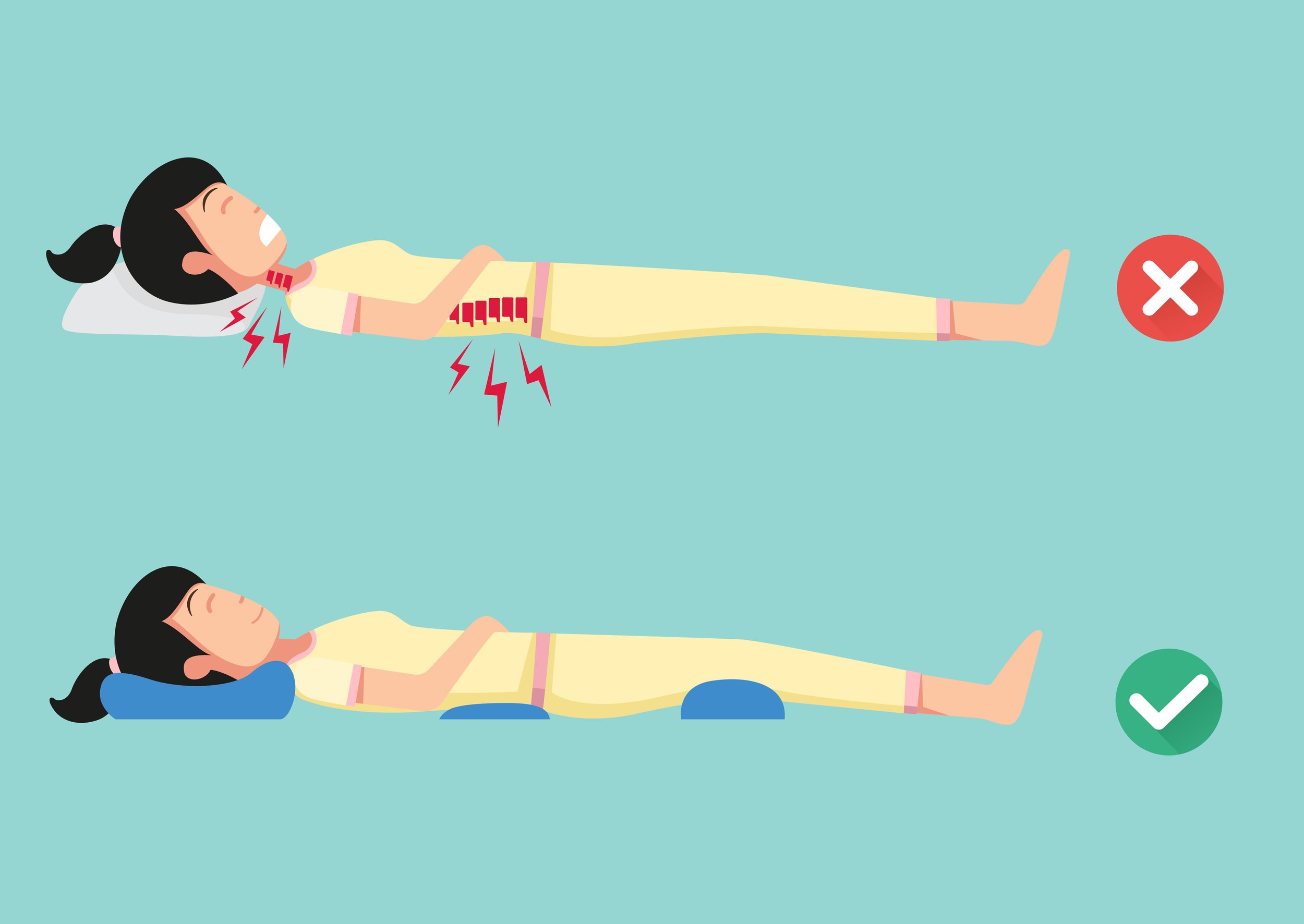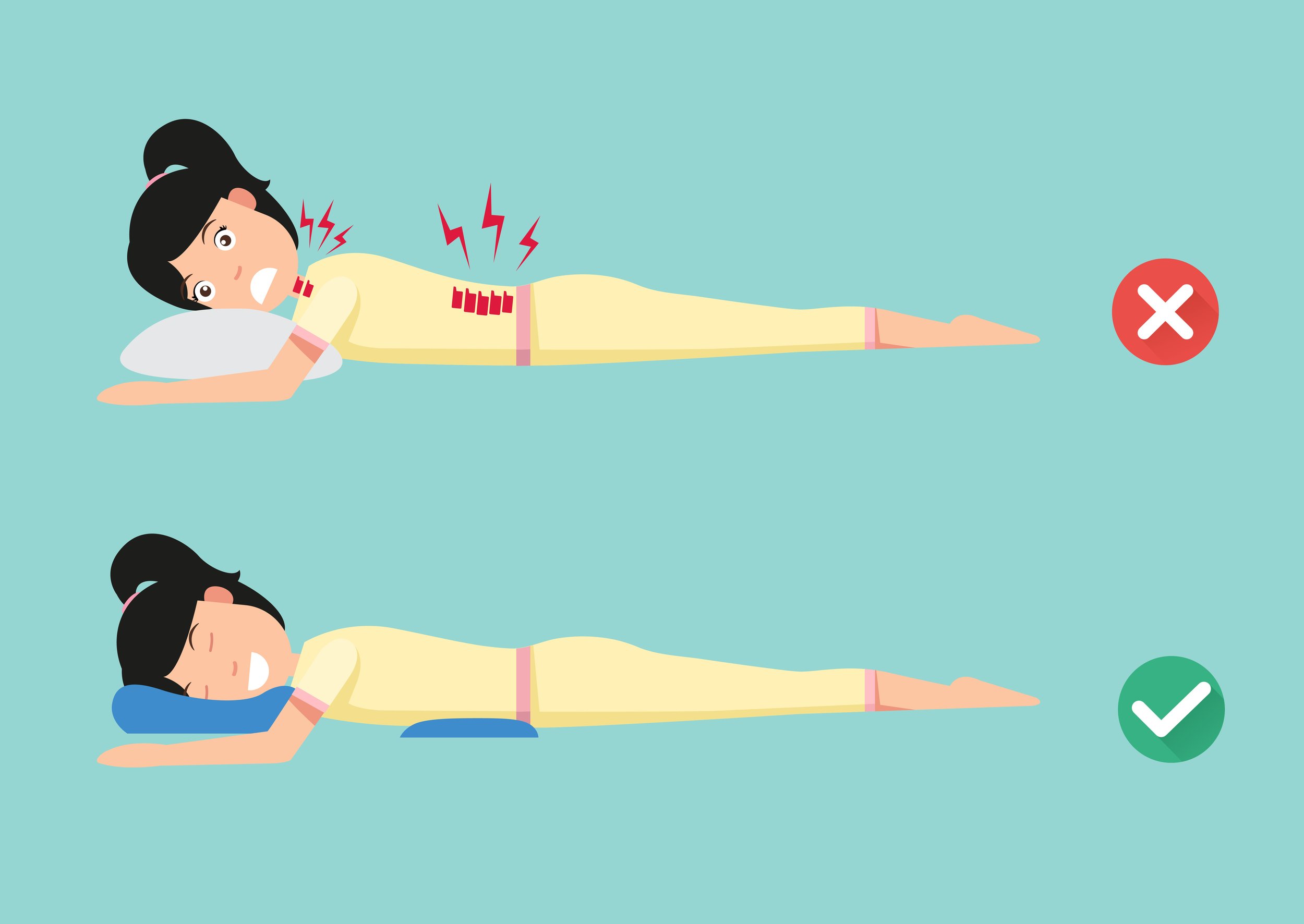How a Chiropractor Sleeps - The Secret to Sleeping Properly
Some of the most common things I hear in the practice are “I think I slept funny,” “I woke up, and one of my body parts hurt!” and “How should I be sleeping, doc?”
Sleeping is an essential factor when it comes to healing and recovery. Having the best night's sleep possible is crucial for your body to recover and recharge, and it is also beneficial for your family members the next morning. Conversely, improper sleeping positions can impact blood flow, irritate injured tissues, and negatively impact the inflammatory process.
Not one sleeping position is the correct one for every individual. As a chiropractor, I always tell my patients I would rather have them get a good quality night's sleep, uninterrupted and without pain, rather than trying to sleep in a particular position.
However! The research provides tips and helpful advice to minimize discomfort, maximize recovery, and achieve optimal sleep.
The most common sleeping positions are
Supine/On your back – can increase your risk of lumbar pain
Side-lying/On your side – can experience neck pain if your pillow is not supportive enough
Prone/On your stomach – can increase your risk of neck and lumbar pain. However, it may provide relief from sciatica symptoms
The end goal of these adaptations to sleeping positions is to maintain your spine in a neutral position to minimize inflammation and optimize recovery!
Adaptations
Supine/On your back – make sure you have a firm pillow to provide enough support for your head/neck. You can add a thinner pillow under your knees to help prevent your pelvis from going into an anterior pelvic tilt, which increases pressure and compression on the lumbar spine.
Side-lying/on your side – again, make sure you have a firm enough pillow to support your neck. Make sure you are not stuffing a thin pillow under your neck; this will not provide the support you need 🤦. An additional tip is to add a pillow in between your legs. The pillow helps prevent your pelvis from rotating and keeps it in a more neutral position. This position has shown to be the most protective of spinal symptoms.
Prone/On your stomach – you should avoid this position as much as possible, as it puts the most stress on your spine while you sleep. However, if you absolutely have to sleep on your stomach, try placing a pillow underneath your hips to decrease the stress placed on the lumbar spine.
If you have trouble sleeping because of pain, try switching it up with these adaptations.
Since we are asleep for one-third of our lives, it is essential to be sleeping effectively.
Here are some additional tips from the team to get a better night's sleep:
A significant piece of feeling well-rested is going to sleep and waking up at a consistent time. Our bodies are based on our circadian rhythm. The circadian rhythm is how our body regulates our energy and metabolism throughout the day. Your brain and body wake up 90 minutes before you physically wake up; that way, your body can start preparing for when your body consciously wakes up. Waking up at a consistent time allows your body’s cortisol levels – the stress hormones to be regulated.
Aim for 7-9 hours of uninterrupted sleep
Limit screen time 60 min before bedtime, or at least use a blue-light dimmer on your phone
Avoid drinking caffeine 6 hours before bedtime
Sleep in cooler temperatures (16 – 18 degrees is best)
Keep the room dark, dark, dark!
Wishing you the best night's sleep!
Looking For More Information About Chiropractic Topics?
Learn more about our Kelowna Clinic here.
View our main Chiropractor page here.
Learn more about Dr. Col - Move RX’s Chiropractor, Owner & Clinic Director here.
How a Chiropractor Sleeps: The Secret to Sleeping Properly (learn how to get the best sleep for your body)



